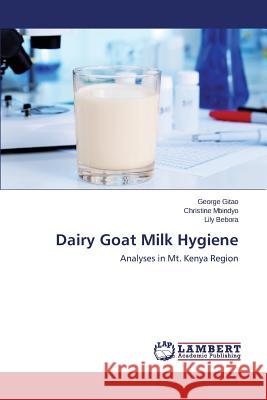Dairy Goat Milk Hygiene » książka
Dairy Goat Milk Hygiene
ISBN-13: 9783659610783 / Angielski / Miękka / 2014 / 112 str.
Goat rearing is a common practice in Africa and goats are normally referred to as the ATMs of poor people as they can be sold off to pay for household needs. Dairy goats on the other hand, are becoming popular mainly because they are easy to feed and manage as compared to cattle. They produce milk rich in vitamin C and most families consume this milk while they sell the cow milk for income generation. In Kenya, dairy goat rearing has been practiced especially in the Mt Kenya Region since 1980s. Many farmers are aware that at times, tea made from some goat milk gets spoilt although they do not know why. This book details the practices of dairy goat production in the Mt Kenya region determined through a cross-sectional survey. The prevalence and manifestation of sub-clinical mastitis were determined through California Mastitis test and bacteria isolations. County Governments and Development agents will find the book particularly useful, as it reveals how simple interventions can result in drastic improvements on milk quality and quantity which will consequently lead to higher standards of living.
Goat rearing is a common practice in Africa and goats are normally referred to as the ATMs of poor people as they can be sold off to pay for household needs. Dairy goats on the other hand, are becoming popular mainly because they are easy to feed and manage as compared to cattle. They produce milk rich in vitamin C and most families consume this milk while they sell the cow milk for income generation. In Kenya, dairy goat rearing has been practiced especially in the Mt Kenya Region since 1980s. Many farmers are aware that at times, tea made from some goat milk gets spoilt although they do not know why. This book details the practices of dairy goat production in the Mt Kenya region determined through a cross-sectional survey. The prevalence and manifestation of sub-clinical mastitis were determined through California Mastitis test and bacteria isolations. County Governments and Development agents will find the book particularly useful, as it reveals how simple interventions can result in drastic improvements on milk quality and quantity which will consequently lead to higher standards of living.











